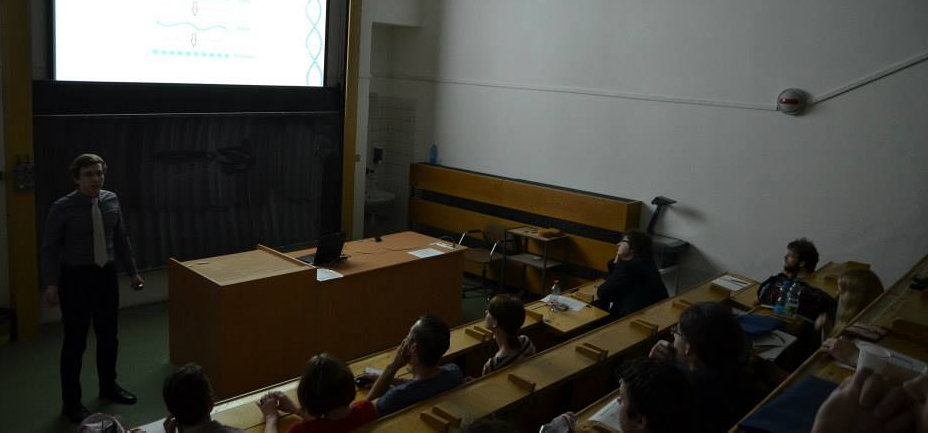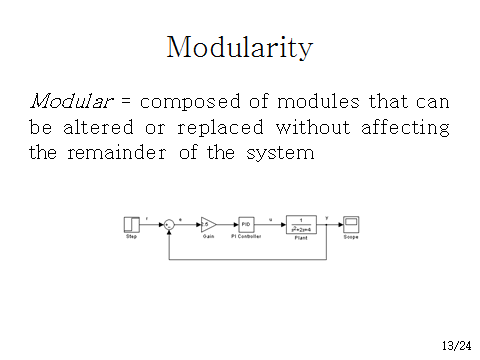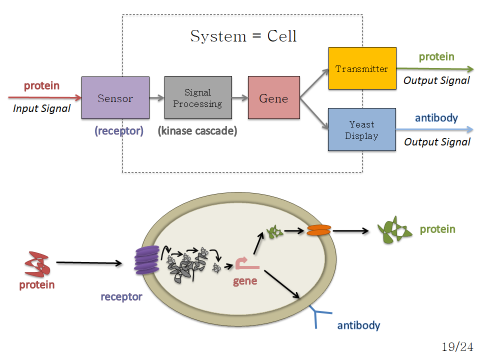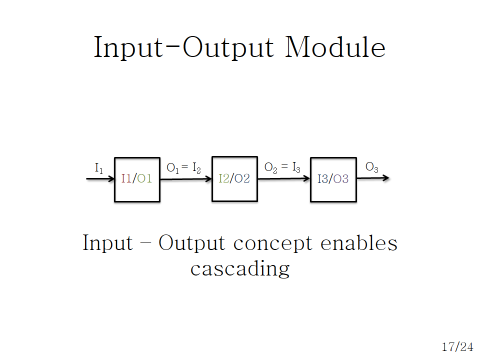Difference between revisions of "Team:Czech Republic/Practices/Lecture"
(→Lecture) |
(→Motivation) |
||
| (19 intermediate revisions by 4 users not shown) | |||
| Line 3: | Line 3: | ||
=Motivation= | =Motivation= | ||
[[File:Czech_Republic_IODLecture2.png|400px|right|border]] | [[File:Czech_Republic_IODLecture2.png|400px|right|border]] | ||
| − | Since our project | + | Since most of us are not only Synthetic Biologists but also students of Cybernetics, the engineering point of view strongly influenced our project design. Moreover, our experience in modeling, system design, and control was perceptible in all sections of the IOD system development. |
| + | Therefore a lot of ideas behind IODs were built on the fundamentals of classical engineering and we wanted to introduce the concept of our project (from an engineering point-of-view) to young engineers and receive their feedback. We presented our project and synthetic biology in general at a lecture of the Introduction to Cybernetics class led by Prof. Ing. Miloš Schlegel CSc. After giving a 30-minute lecture on synthetic biology, we introduced our project. The response was surprisingly positive. Not only we were asked several to-the-point questions, but some of the students also showed a deeper interest in synthetic biology and individually contacted us after the talk. | ||
=Lecture= | =Lecture= | ||
<html><div class="break"></html> | <html><div class="break"></html> | ||
[[File:Czech_Republic_Lecture_modularity.png|right]] | [[File:Czech_Republic_Lecture_modularity.png|right]] | ||
| − | + | In most, if not all, engineering disciplines, engineers design complex systems by combining simpler components together. This is the idea of modularity, an idea so potent one could hardly come up with an example of a functioning system that does not use modularity. Why is this idea so fruitful? Modularity offers easiness of design and simplicity of modification of an already working system. For example, a sensor can be easily replaced by a different sensor to measure a completely different quantity. The same interchanging procedure can be done with every other type of component. Diploid IODs form from two haploids. Thus, their user can complete countless combinations of sensors (receptors), transmitters (pheromones), and locational tags (yeast display). Furthermore, the design of IODs offers another level of modularity in the communication between different IOD types. | |
<html></div> | <html></div> | ||
| − | <div class="break" style="border-top: 1px solid | + | <div class="break" style="border-top: 1px solid silver; padding-top: 15px;"></html> |
[[File:Czech_Republic_Lecture_system.png|left]] | [[File:Czech_Republic_Lecture_system.png|left]] | ||
| − | + | The primary goal of cybernetics is to control systems. To be able to control them efficiently, one must be able to predict the response of various monitored input signals. That is why control engineers focus on mathematical modeling, as mathematical modeling is essentially the only rigorous method for an interpretation of system responses. | |
<html></div> | <html></div> | ||
| − | <div class="break" style="border-top: 1px solid | + | <div class="break" style="border-top: 1px solid silver; padding-top: 15px;"></html> |
[[File:Czech_Republic_Lecture_inputoutput.png|right]] | [[File:Czech_Republic_Lecture_inputoutput.png|right]] | ||
| − | + | Control engineers often use block diagrams to graphically illustrate the interactions between modules in a system. Block models simplify the description of a system and make it intuitive. Therefore, it is not necessary to describe a system with complicated differential equations. We used the advantages of block diagrams to make designing of IODs simpler and to make the ideas behind IODs understandable also to the non-biologists. | |
<html></div></html> | <html></div></html> | ||
Latest revision as of 00:52, 19 September 2015
Lecture
Contents
Motivation
Since most of us are not only Synthetic Biologists but also students of Cybernetics, the engineering point of view strongly influenced our project design. Moreover, our experience in modeling, system design, and control was perceptible in all sections of the IOD system development. Therefore a lot of ideas behind IODs were built on the fundamentals of classical engineering and we wanted to introduce the concept of our project (from an engineering point-of-view) to young engineers and receive their feedback. We presented our project and synthetic biology in general at a lecture of the Introduction to Cybernetics class led by Prof. Ing. Miloš Schlegel CSc. After giving a 30-minute lecture on synthetic biology, we introduced our project. The response was surprisingly positive. Not only we were asked several to-the-point questions, but some of the students also showed a deeper interest in synthetic biology and individually contacted us after the talk.
Lecture
In most, if not all, engineering disciplines, engineers design complex systems by combining simpler components together. This is the idea of modularity, an idea so potent one could hardly come up with an example of a functioning system that does not use modularity. Why is this idea so fruitful? Modularity offers easiness of design and simplicity of modification of an already working system. For example, a sensor can be easily replaced by a different sensor to measure a completely different quantity. The same interchanging procedure can be done with every other type of component. Diploid IODs form from two haploids. Thus, their user can complete countless combinations of sensors (receptors), transmitters (pheromones), and locational tags (yeast display). Furthermore, the design of IODs offers another level of modularity in the communication between different IOD types.
The primary goal of cybernetics is to control systems. To be able to control them efficiently, one must be able to predict the response of various monitored input signals. That is why control engineers focus on mathematical modeling, as mathematical modeling is essentially the only rigorous method for an interpretation of system responses.
Control engineers often use block diagrams to graphically illustrate the interactions between modules in a system. Block models simplify the description of a system and make it intuitive. Therefore, it is not necessary to describe a system with complicated differential equations. We used the advantages of block diagrams to make designing of IODs simpler and to make the ideas behind IODs understandable also to the non-biologists.
Acknowledgement
Prof. Ing. Miloš Schlegel CSc



